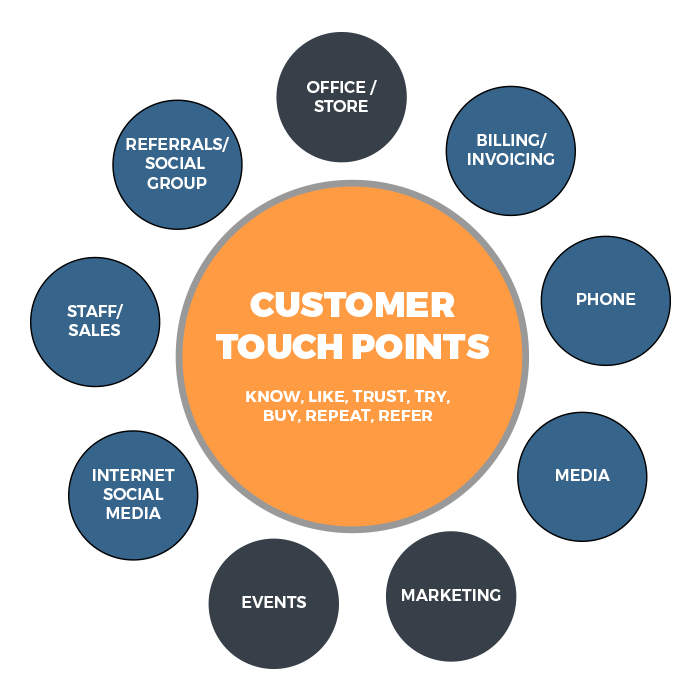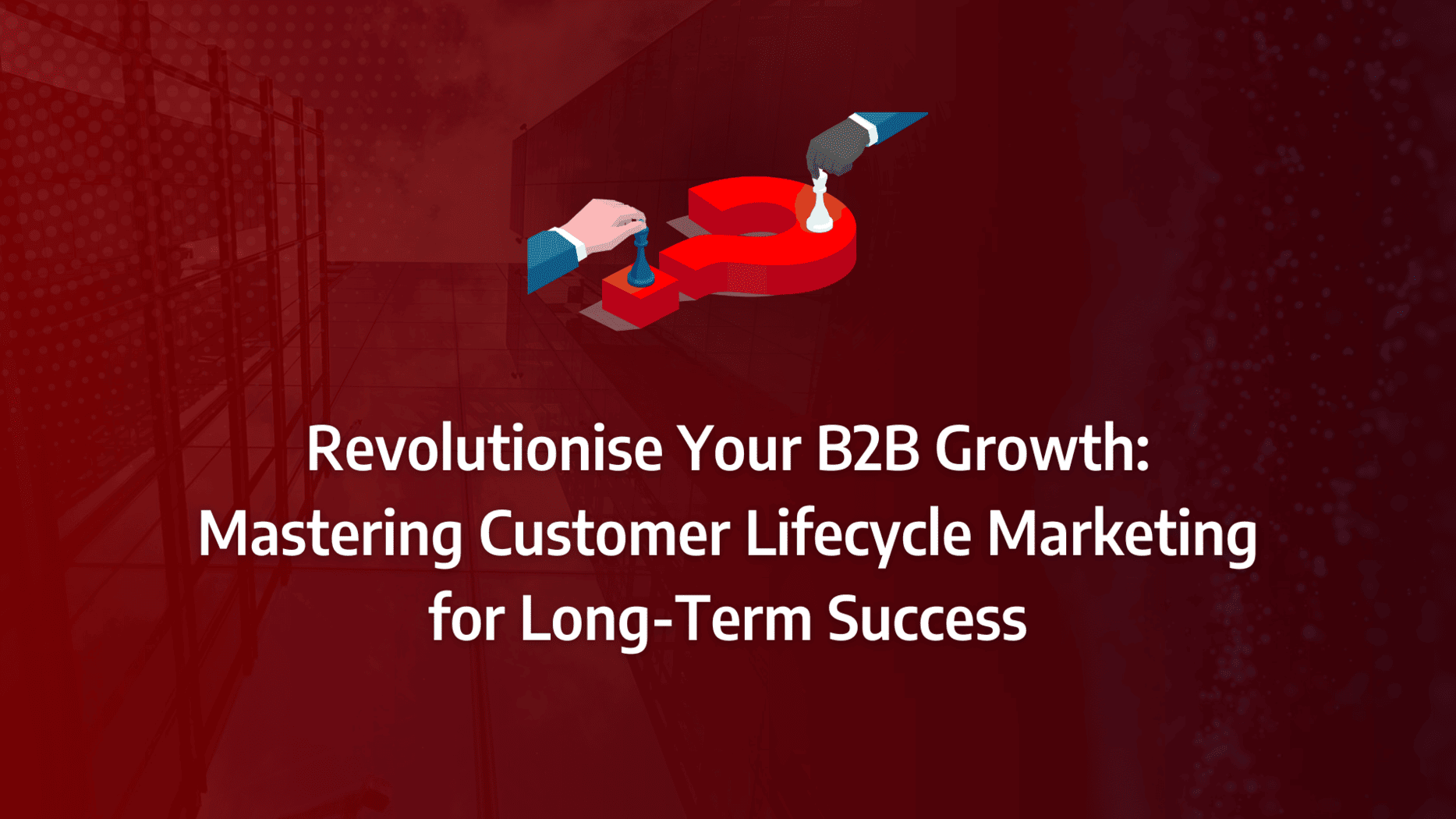If your customer engagement strategies aren’t growing alongside your business, you’re at risk of losing the momentum necessary for long-term success. That’s where customer lifecycle marketing comes into play—a strategy that not only nurtures relationships at every stage of the customer journey but also drives sustained growth for your business. This post will walk you through the critical phases of the customer lifecycle, offering actionable insights on how to tailor your marketing efforts to meet the evolving needs of your customers.
- Understand the Importance of Customer Lifecycle Marketing: Effective lifecycle marketing is essential for driving long-term B2B growth by nurturing customer relationships at every stage.
- Segment Your Customer Base: Divide your customers into segments based on lifecycle stages to tailor your marketing strategies more effectively.
- Implement Personalised Marketing: Use personalised content and communication strategies to engage customers according to their specific lifecycle stage.
- Utilise Automation Tools: Leverage CRM systems and marketing automation tools to streamline your lifecycle marketing efforts, ensuring consistency and efficiency.
- Measure and Optimise: Continuously measure the effectiveness of your lifecycle marketing campaigns and adjust your strategies to improve outcomes.
- Align Sales and Marketing: Ensure that your sales and marketing teams are aligned in their approach to customer lifecycle management for a seamless customer experience.
What is Customer Lifecycle Marketing?
Customer lifecycle marketing refers to the strategic management of communications to guide prospects and customers through every stage of their journey. This approach ensures the seamless integration of all marketing channels and touchpoints, delivering tailored experiences at each step. By employing techniques like personalised messaging and retargeting, brands can effectively nurture relationships and drive engagement throughout the entire b2b customer lifecycle.
The Benefits of Customer Lifecycle Marketing:
- Alignment between Marketing and Customer Experience: A well-executed customer lifecycle marketing strategy delivers a unified brand experience across all touchpoints. This consistency enhances the customer’s perception of your brand, strengthening their connection at every interaction.
- Enhanced Brand Visibility: By maintaining a cohesive and clear brand message throughout the b2b lifecycle marketing process, companies can significantly boost their visibility. This approach reinforces brand values and positions the brand more prominently in the market.
- Value at Every Stage of the Customer Journey: B2B customer lifecycle marketing allows you to fine-tune messaging and experiences based on the customer’s current phase, ensuring relevance and delivering value whether they’re just becoming aware of your brand or considering repeat purchases.
- Increased Customer Retention and Loyalty: Building strong, long-term relationships is key. Focusing on personalised engagement throughout the b2b customer lifecycle cultivates loyalty, reducing churn and encouraging repeat business.
- Higher Customer Lifetime Value (CLV): By optimising every interaction, b2b lifecycle marketing can drive higher CLV through increased customer retention, cross-selling, upselling, and ensuring customers remain engaged over the long term.
The goal of a robust lifecycle marketing plan is to create a customer-centric approach that not only attracts new business but also nurtures lasting relationships, contributing to both brand growth and long-term sustainability.

What Matters Most?
From our experience, developing content that aligns with each stage of the customer journey is critical for effective lead nurturing. Clients often discover that mapping the customer journey reveals key touchpoints for optimisation, allowing for a more tailored approach. Typically, a focus on building long-term relationships rather than just short-term sales fosters deeper loyalty, enhancing overall customer lifetime value.Get In Touch
What are the Five Phases of the Customer Life Cycle?
Understanding the b2b customer lifecycle is essential for optimising your customer lifecycle marketing strategy. Each stage of the b2b lifecycle marketing process represents a unique opportunity to engage, nurture, and convert prospects into long-term, loyal customers. Let’s explore the four critical phases of this journey: awareness, acquisition, conversion, and loyalty.
1. Awareness
In the awareness stage, the customer recognises a problem or a need that requires a solution. For instance, someone who has recently started a yoga class may now realise they need a comfortable yoga outfit. At this stage, the customer is actively seeking information and open to exploring options.
Common behaviours during the awareness phase include:
- Searching online for relevant products or solutions, such as yoga outfits.
- Visiting stores to explore potential products.
- Seeking recommendations from friends, family, or peers.
The awareness stage ends when the customer identifies a shortlist of potential brands that could meet their needs. This marks the transition to the acquisition stage, where they will begin to engage more deeply with these brands.
2. Acquisition
During the acquisition stage, the customer evaluates the brands they discovered during the awareness phase. They’ll compare factors such as product quality, pricing, durability, delivery speed, and additional elements like shipping costs.
For example, if our yoga enthusiast is torn between two brands, they might assess which one offers the best value in terms of fabric quality or delivery times. They may also:
- Browse the brand’s website to explore product options in greater detail.
- Take quizzes or engage with tools that provide personalised product recommendations.
- Follow the brand on social media to stay informed and see customer interactions.
- Read product reviews to gauge the experiences of others.
Not all customers make a purchase during the acquisition stage, but those who are satisfied with the brand will advance to the conversion phase.
Source: MarketingTechBlog
3. Conversion
The conversion stage is where customers decide whether to make a purchase. However, this decision isn’t always immediate, and there are various paths a prospect may take:
- They may complete a purchase right away.
- They could hold off for a better offer or wait for a discount.
- They might explore competing brands before deciding.
Abandoned carts often occur at this point due to reasons like high shipping fees, a cumbersome checkout process, or simple hesitation. This is where tactics such as browse abandonment emails and cart recovery emails become crucial in encouraging customers to complete their purchases.
Additional information, such as product quality, manufacturing details, or guarantees, can play a vital role in converting hesitant customers into buyers. Once the purchase is complete, the customer moves to the fulfilment stage.
4. Fulfilment
The fulfilment phase begins when the customer places an order and ends when the product is delivered. This is a critical moment in the customer lifecycle marketing plan, as customers may experience post-purchase anxiety and second-guess their decision. To alleviate this, brands can:
- Send order confirmation and shipping updates to keep customers informed and reassured.
- Provide tips on product use to reinforce the value of their purchase.
The fulfilment stage also involves ongoing customer support, ensuring any issues are promptly addressed. Once the customer has received their product and is satisfied with their experience, they transition into the loyalty stage.
5. Loyalty
After receiving and using the product, customers form their final judgement of both the product and the brand. In the early days, they may closely evaluate their experience and reach out to customer support for help or clarification. Those satisfied with their purchase are likely to become repeat customers, while those who are disappointed may seek alternatives.
During the loyalty stage, customers might:
- Write product reviews, sharing their feedback with others.
- Upgrade to premium products if they find value in their initial purchase.
- Explore different product categories within the same brand.
- Recommend the product to others, becoming brand advocates.
- Join loyalty programmes or start subscriptions for continued engagement.

Retention marketing becomes a crucial strategy in this phase, focusing on maintaining long-term customer relationships and encouraging repeat business.
Our Tactical Recommendations
We often find that creating a content calendar that addresses customer lifecycle milestones ensures consistent engagement and relevance. Analysing data to identify drop-off points in the customer journey enables targeted strategies to re-engage prospects, enhancing conversion rates.Get In Touch
What are the Best Lifecycle Marketing Tactics That Keep Customers Coming Back?
To succeed with b2b lifecycle marketing, it’s vital to implement tactics that nurture long-term customer relationships. By tailoring your customer lifecycle marketing strategy to each stage of the customer journey, you’ll build loyalty and drive repeat purchases. Here are some of the most effective tactics to keep customers engaged and ensure they return.
1. Deepen Your Understanding of Your Audience with Buyer Personas
Creating detailed buyer personas, also known as customer avatars, allows you to visualise your ideal customers’ psychology. This includes their thoughts, concerns, expectations, and behaviours. Essentially, these personas serve as role-playing tools to help you craft marketing strategies that resonate with real-life customer motivations.
Personas are segmented to represent specific groups within your target audience and often carry descriptive, evocative names to highlight their characteristics. While these may differ from one business to another, common personas often include:
- The Bargain Hunter
- The Brand Loyalist
- The Impulse Buyer
- The Innovator
- The Value Shopper
When building personas, it’s crucial to gather a broad spectrum of data, such as:
- Demographics and psychographics
- Purchasing behaviours, including where they prefer to shop (online or in-store) and how frequently
- The solutions your brand provides that meet their needs
- Preferred communication channels
- Factors influencing their purchase decisions or causing hesitation
By integrating this data into your lifecycle marketing plan, you’ll be better positioned to deliver personalised and effective messaging throughout the b2b customer lifecycle.
2. Set Specific Goals for Each Lifecycle Stage
A critical part of any customer lifecycle marketing strategy is setting clear, measurable goals for every stage of the customer journey. While the overall aim is customer retention, breaking it down into more focused goals enables you to monitor and adjust your tactics with greater precision. For example, you may have different KPIs for first-time customers versus loyal, returning customers, allowing for more tailored approaches at each step.
Source: Bizsum
3. Segment Customers Based on Key Milestones
To maximise the effectiveness of your b2b lifecycle marketing, segmenting customers according to their journey milestones is essential. This enables you to personalise your outreach efforts and deliver highly relevant communications. Consider offering targeted discounts or rewards for key events such as:
- First-time purchases
- Repeat purchases
- Loyalty anniversaries
This segmentation not only makes your customers feel appreciated but also strengthens their bond with your brand over time.
4. Build a Comprehensive Loyalty Programme
To retain your most valuable customers in the post-purchase phase of the b2b customer lifecycle, building a robust loyalty programme is key. Personalised offers and exclusive rewards ensure that customers feel valued. By implementing a points-based system, you can encourage repeat purchases and foster long-term loyalty.
For high-value customers, you can create exclusive tiers within the loyalty programme, offering perks such as early access to new products or special promotions. This not only incentivises continued engagement but also reduces churn.
5. Re-Engage At-Risk Customers with Personalised Communication
When you notice customers losing interest, it’s critical to take swift action to re-engage them. Personalised communication, such as targeted emails or special offers, can help rekindle their interest and maintain their loyalty. By analysing their past interactions, you can tailor your messages to address their specific needs and preferences.
6. Launch Win-Back Campaigns for Lapsed Customers
If a customer has been inactive for a significant period, it’s time to implement a win-back campaign. Reach out with aggressive promotions or personalised offers based on their previous purchasing history. Highlighting products or services they’ve shown interest in can increase the likelihood of reactivating their account.
7. Treat Reactivated Customers Like First-Time Shoppers
Customers who have re-engaged with your brand should be treated with the same care and attention as first-time shoppers. In fact, retention rates for reactivated customers are often as high as those for new customers. Offer them exclusive deals and personalised experiences to solidify their renewed loyalty.
By incorporating these tactics into your lifecycle marketing plan, you ensure each customer receives the right message at the right time, keeping them engaged and loyal to your brand throughout the b2b customer lifecycle.







